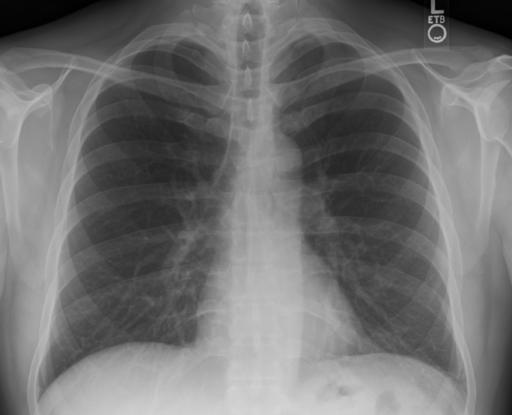While wandering the web I came across this comment:
“Chest X-rays account for 40 percent of all diagnostic imaging worldwide. The number of exams can create significant backlogs at health care facilities. In the U.K. there are an estimated 330,000 X-rays at any given time that have been waiting more than 30 days for a report.”
The answer to this clinical dilemma was, of course, that brightest of new and shiny objects – deep artificial intelligence. But before we rush to a solution let that number sink in for just a moment and then ask yourself: "If you can wait this long to get a report, what possible clinical purpose can it have served?"
I have full respect to my radiological brothers and sisters in the United Kingdom, who reported this on more than one occasion, but who cannot seem to mobilize the administrative and political will necessary to make changes. The underlying causes and solutions to the backlog sound familiar.
- Too few trained and poorly-distributed radiologists, in the UK there are about 48 per million population, as compared to 100 per million in the United States. Geographic assignment results in too little or too much work, with no easy way to redistribute resources to meet the need “on the fly.”
- Inappropriate system metrics – the National Health Services measures the time from prescribing to test performance, not reporting.
- Substituting “physician equivalents” – Radiographers, highly trained technicians who perform these studies (but with limited clinical training) and formalized feedback to improve their judgment provide their interpretation as an early “wet reading.” [1]
- Artificially increasing resources through required overtime or outsourcing facilitated by technology – the Internet makes images easily transmitted and interpreted from a distance. [2]
And of course, there is a deep learning algorithm that is basically good, not at reading the study, but at triaging the "critical" studies to the top of the queue. And because Artificial Intelligence sounds cutting-edge, and once purchased requires only a maintenance contract version of healthcare – but no pension, sick days or vacation – it is attractive to administrators, those who need to make this unacceptable backlog of work go away.
Solutions based on how you frame the question
While the natural question is how to reduce the backlog, the underlying, more important question is: "What test allows physicians to be content waiting 30 days for a clinical result?" That problem does not require an algorithm; it requires a discussion, presumably within the NHS, regarding the purpose of these tests. There are limited reasons to order a chest X-ray: as part of a protocol, or to diagnose or follow up on a clinical problem.
In the U.S. a pre-operative chest X-ray is a typical protocol-driven test. As Choosing Wisely, the program to reduce unnecessary testing points out, while many hospitals require them and that number is decreasing, as pre-operative chest X-rays are largely unnecessary outside limited conditions. The necessity for a rapid answer to a diagnostic X-ray should be self-evident. Perhaps a 30 window is acceptable if you're following up on a diagnostic problem? More often than not those problems involve cancer or infection, and chest X-rays are just not the best imaging option.
I doubt chest X-rays are ordered because of malpractice concerns, especially when it would be considered malpractice to have waited 30 days for the report. I do not know, but I suspect that if you eliminate the medically unnecessary imaging of protocols and the follow-up studies, better managed by clinical evaluation or more appropriate imaging, that the backlog would drop dramatically.
In today’s healthcare time is money
Payers want to limit time, and the health systems try to improve their return, by increasing patient volume. In assembly-line medicine, the 15-minute office visit is sacred. Physicians 20 to 30 minutes behind after only the first two hours in the office might be inconsiderate or thorough, take your choice. But to the timekeepers they are holding up the line. In these circumstances, it is far easier to order a test than to manage care by examination.
Examination requires time. Looking at a patient’s chest as they breathe, tapping the various areas of the chest to listen for hollow versus dull sounds, and then listening to the lungs front and back takes a minute, even two. And that doesn’t include the additional minutes required to enter the findings into the electronic record. Before you know it, a third of that 15-minute visit is lost – and that doesn’t even allow for time to explain what you might have found, as well as the doctor's treatment plan. By contrast, it takes 15 seconds to order the chest X-ray.
The bottleneck of the 15-minute examination can be solved by ordering a test rather than doing an examination. But that only creates a bottleneck downstream in reading those additional tests.
The answer is not in an algorithm. It lies in finding ways to slow the roll, and to stop attempting to standardize care into time intervals. Doctors might have answers. But to be honest. we are spending so many extra hours beyond our eight-hour day, using the time-saving electronic health record you provided to speed up and standardize our work, that, well, we just don’t have time.
###
[1] A wet reading harkens back to the day that imaging involved making pictures and developing them in a darkroom so that interpretations were made while the film was just out of the chemical developer and still wet.
[2] For many years now, radiologists in the US sleep at night because the x-rays taken on the night shift are read by radiologists awake and ready to go, in Australia or other global centers.
Sources: Automated Triaging of Adult Chest Radiographs with Deep Artificial Neural Networks Radiology DOI: 10.1148/radiol.2018180921
Unreported X-rays, computed tomography (CT) and magnetic resonance imaging (MRI) scans: Results of a snapshot survey of English National Health Service (NHS) trusts Clinical Radiology Royal College of Radiologists




